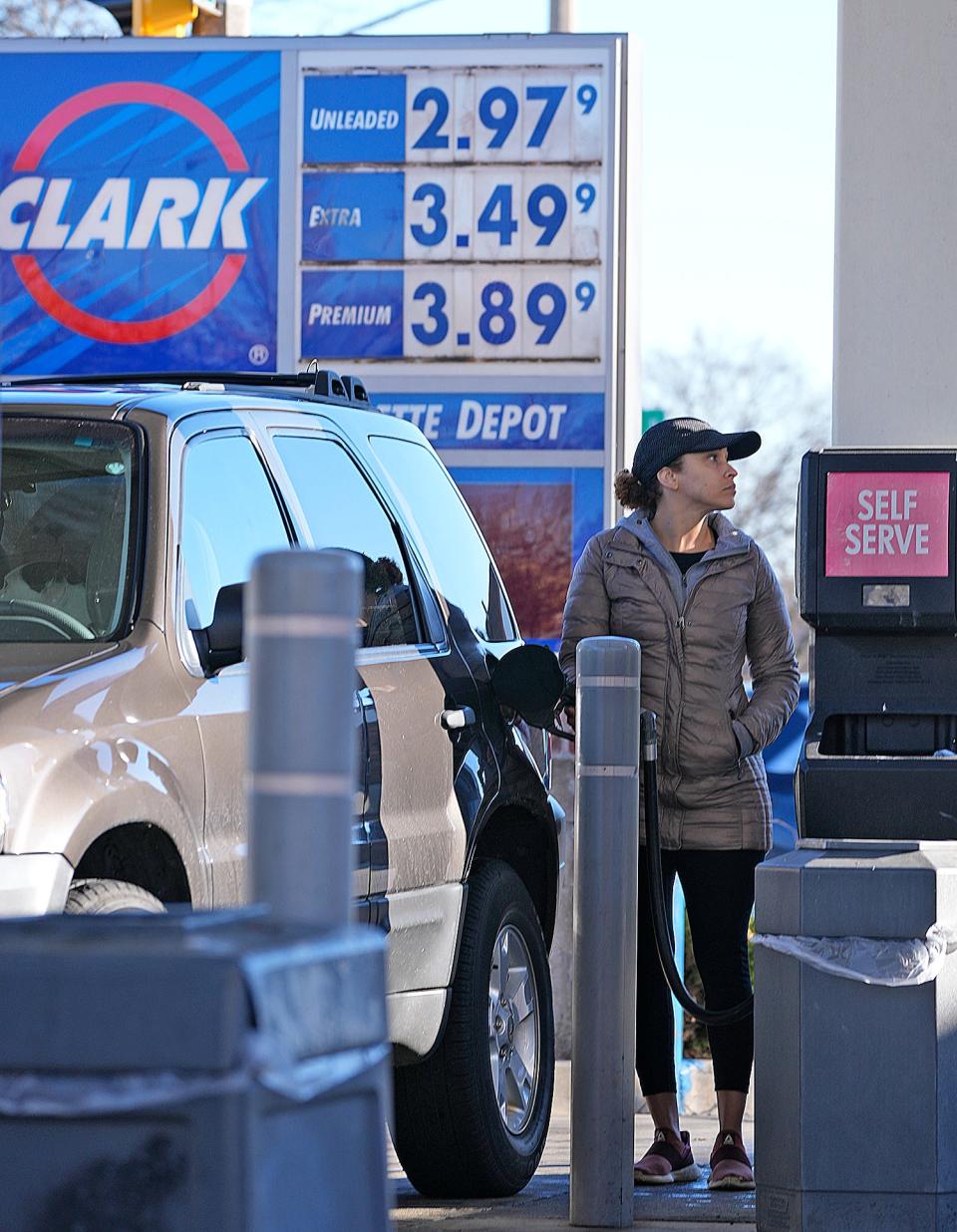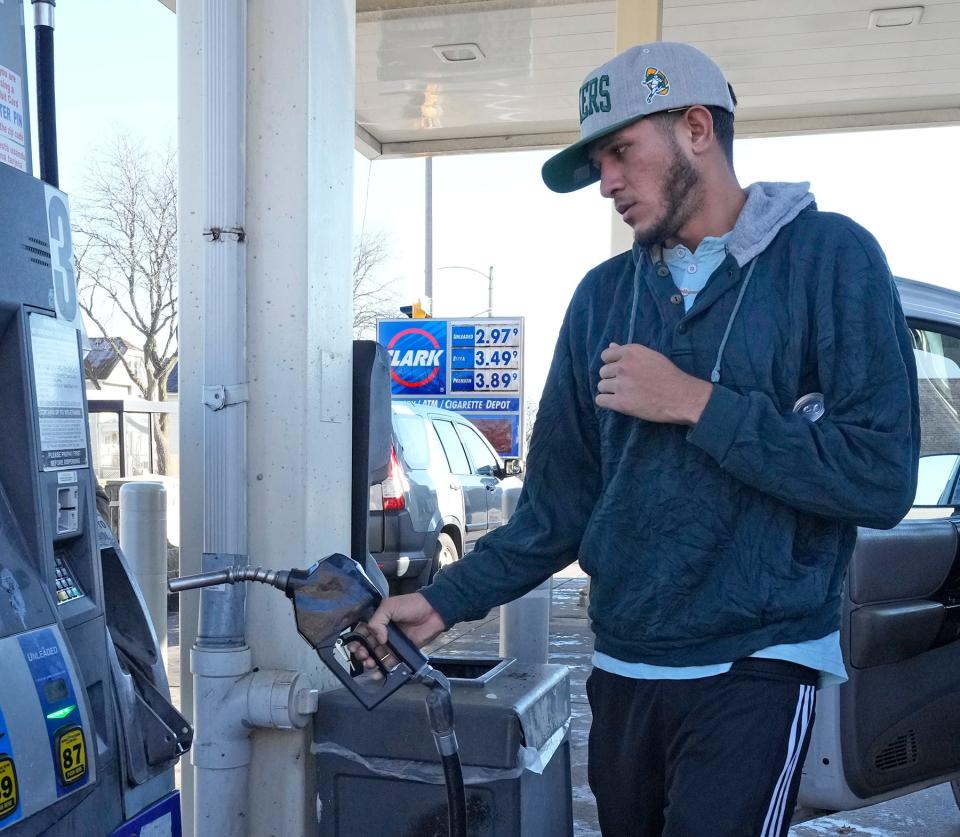Gas prices are going up in Milwaukee. Here's why, according to experts.
Following steady low prices throughout the winter, gasoline prices have gone up in Milwaukee and across the country over the past few weeks, and experts expect them to rise through the spring.
In the Milwaukee area, the average price of a gallon of regular gas has risen from about $2.70 to $3.12 in the past month, according to data from AAA. In Wisconsin, average prices have risen at a similar rate over the same time period, from about $2.75 to $3.13 per gallon.
Milwaukee and Wisconsin gas prices remain slightly lower than the national average, which has risen from about $3.10 to $3.30 per gallon over the past month.
According to AAA, prices shot up 12 cents nationwide in mid-February, largely due to a shutdown at Indiana's BP-Whiting refinery, which has been dealing with a multi-week power outage. Prices have since stabilized somewhat, AAA reported last week, and the BP-Whiting refinery is expected to reopen soon.
However, gas prices in Milwaukee and the Midwest are expected to steadily climb through April or May, following trends typical for this time of year, said Gas Buddy head of petroleum analysis Patrick De Haan. Here's what to know.

Why are gas prices going up in Milwaukee?
"Gas prices are almost always up starting in mid-to-late February," De Haan said. "That usually lasts through April or May. So, for now, gas prices will likely do more increasing."
In March and April, Milwaukee could see gas prices go up 10-to-25 cents a gallon per month, he continued. He estimates average prices could be between $3.30 and $3.50 in March and $3.50 to $3.80 in April. However, he does not expect Milwaukee's average price to hit $4 this year.
Typically, there are three seasonal factors that drive up gas prices every spring, De Haan explained. First, every year by the end of February in the Midwest, the incremental switch from higher-butane winter-blend gasoline to lower-butane summer-blend gasoline usually causes gas prices to climb.
In the Midwest, winter gasoline is switched over to summer gasoline in two steps. The first step happened on Feb. 25, De Haan said, and the second is scheduled for March 15. This means we're currently using a transitional-blend gasoline, and true summer-blend gas will start flowing once the second step is complete.
Second, the switch from winter- to summer-blend gasoline tends to coincide with the heavy refinery maintenance season, De Haan said. Maintenance is done before the summer because gasoline is most in demand when the weather is warm and people are taking summer vacations.
"Also, there's a much lower supply of summer gasoline to start the season than at the peak of the summer," De Haan explained. "This is because gasoline has a shelf life of about three-to-six months. So, there's no leftover gasoline from last summer."
Additionally, with this winter's above-normal temperatures and unseasonably pleasant weather, demand for gasoline is higher than is typical for this time of year because people travel more when the weather is nicer, he continued.
"So, as everyone is doing maintenance, supply is going to be quite tight at the beginning of the changeover ... and demand is going up. Those are usually the three reasons why gas prices go up coast-to-coast every spring."

Milwaukee-area gas prices are expected to decline by June
Generally, gas prices in Milwaukee and the Midwest level off by June and slowly decline throughout the summer due to increased supply and heavy refinery maintenance being over, De Haan explained. Maintenance is usually complete by April or May, allowing refineries to "produce as much gasoline as possible" in the summer.
"Really, the only exception is prices could go up if there's a major hurricane or if there's a refinery outage in the middle of the summer," he said.
Prices typically decline even more sharply in mid-September, when we make the switch back to winter-blend gasoline. The Environmental Protection Agency only requires refineries to produce summer gasoline from May 1 to Sept. 15 and retailers to sell it from June 1 to Sept. 15, giving them four weeks to get rid of their winter gasoline supply.
Gas prices tend to hit their lowest point between Thanksgiving and Christmas, De Haan said. He added that Milwaukee should see prices fall back under $3 per gallon by the end of 2024.

Where can I find the cheapest gas prices in Milwaukee?
GasBuddy maintains a list of the cheapest gas prices in the Milwaukee area, based on reports from local GasBuddy users. As of Wednesday afternoon, the cheapest price per gallon could be found at Costco in Pewaukee ($2.84), Sam's Club on 124th St. ($2.84) and Costco in Menominee Falls ($2.84).
For an up-to-date list of the cheapest gas prices in the Milwaukee area, click here.
This article originally appeared on Milwaukee Journal Sentinel: Why are gas prices going up in Milwaukee?

